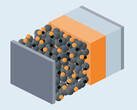The change that was first mentioned in a study in December 2023 couldn't be smaller. With just 30 lines of code, data throughput can be increased by up to 45% without significantly increasing the processing time for individual requests.
At the same time, energy consumption is significantly reduced. With a high utilization of computing capacities, savings of up to 30% are expected. Considering that most servers around the world run on Linux, this would result in a gigantic amount of electricity that could be saved.
Currently, servers and data centers are consuming an estimated 500 terawatt-hours today, and this number double over the next couple of years. 10% of that alone would be sufficient to completely power a small industrial nation like Denmark.
Optimizing workflows and computing capacities
According to Professor Karstens, one of the study's authors, these improvements do not require any additions to the Linux kernel. Instead, the workflow was optimized to minimize the number of interrupt requests to the processor.
With large amounts of data, these IRQs are used to stop program execution and reallocate resources elsewhere. The program then resumes at the point of interruption.
But this approach is rather inefficient. Through the changes to the kernel, the processor's cache can be used more efficiently and the number of interrupts can be reduced significantly. Thus, servers can work faster and with less interruptions, especially under load.
That’s the theory. It goes without saying that the implementation in real-world severs and data centers takes time. With version 6.13 of the Linux kernel, the aforementioned changes have been implemented and should hopefully come to fruition in the upcoming Linux updates.























